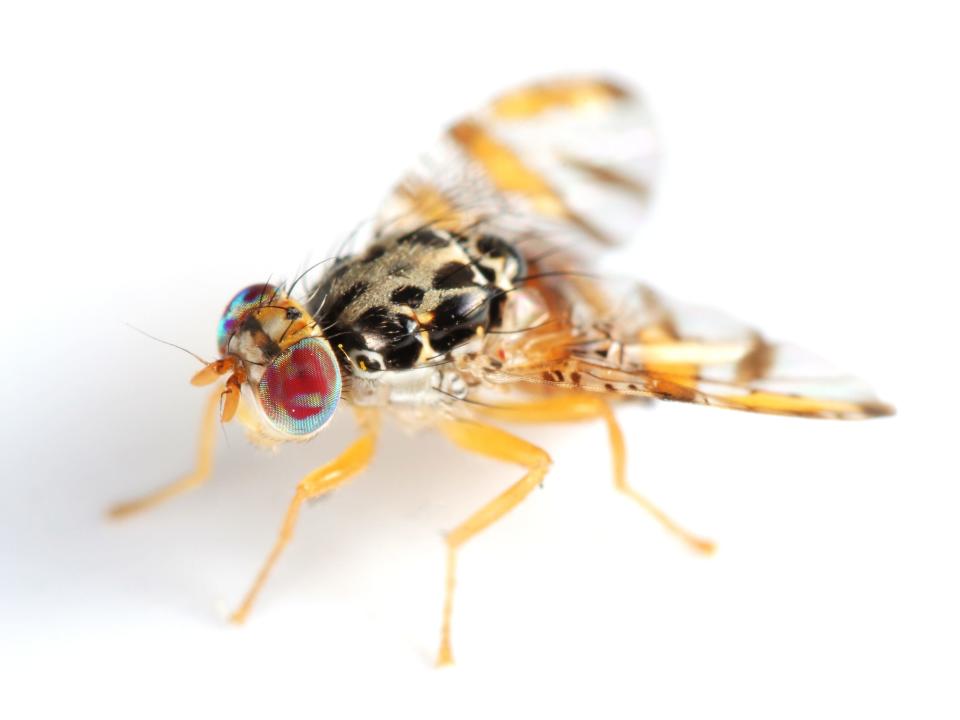California dumping millions of sterile Medflies to help clear invasive species
A portion of Los Angeles County has been under quarantine since Monday to protect the spread of the Mediterranean fruit fly after two of the invasive species were spotted in a Los Angeles neighborhood.
According to a release from the California Department of Food and Agriculture, an area in Los Angeles County approximately 69 square miles wide is under quarantine after two Mediterranean fruit flies, also known as the "Medfly," were found in Leimert Park, a neighborhood in the city of Los Angeles.
In order to help eradicate the Medfly, around 250,000 sterile male Medflies will be released per square mile, in 9 square mile area around the infestation every week. This will add to the already regular aerial releases of sterile Medflies in the Los Angeles Basin, which are an exclusionary measure.

Ken Pellman, a press representative for the Los Angeles County Agriculture Department, told SFGate the sterile male Medflies are marked with a special purple dye, loaded on an airplane, then "just released out of the bottom of the cabin," once the plane reaches liftoff.
The U.S. Department of Agriculture, the Los Angeles County Agricultural Commissioner and the California Department of Food and Agriculture are working together on this project.
The quarantine will affect any residents, as well as growers, wholesalers and retailers of susceptible fruit in the area. Residents in the quarantine area can still consume or process fruit on the property where it was picked, but should dispose of any fruit by double bagging and placing it in the regular trash, not green waste.
Home gardeners are urged to consume any homegrown produce on site, and not move it from their property.
In addition to the quarantine, properties within 200 meters of any detections are being treated with an organic formulation of the insecticide Spinosad, to remove any mated female Medflies and to reduce the density of the Medfly population.
There will also be fruit removal within 100 meters of any properties with larval detections and/or the detections of multiple adults.
Invasive species and climate change: A perfect match? These animals thrive amid global warming.
What is a Mediterranean fruit fly, or a 'Medfly'?
According to the USDA, the Medfly is considered to be "the most important agricultural pest in the world."
Originating in sub-Saharan Africa, it has spread throughout the Mediterranean region, southern Europe, the Middle East, Western Australia, South and Central America and Hawaii. It first arrived in the mainland U.S. in Florida in 1929.
In the U.S., California, Texas and Florida are at a high risk for the Medfly, according to the USDA.

Adult Medflies have a blackish thorax marked with silver, a tan abdomen with darker stripes and clear wings with light brown bands and gray flecks.
What are the signs of a Medfly infestation?
The Medfly has been recorded targeting and infesting more than 250 types of garden and commercial fruits, nuts and vegetables, including:
Apple
Avocado
Bell pepper
Citrus
Melon
Peach
Plum
Tomato
Signs of a Medfly infestation include fallen fruit with early decay and visible adult flies. Damage to produce occurs when a female Medfly lays eggs inside fruit. Those eggs hatch into maggots, which tunnel through the fruit's flesh, making it unfit for consumption.
Is the ivory-billed woodpecker extinct? Not yet, but these 21 animals are
This article originally appeared on USA TODAY: What is a Medfly?: Part of LA quarantined, invasive species spotted

